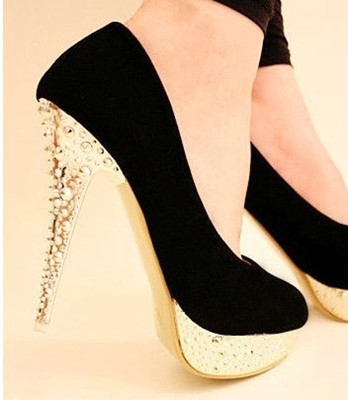In physics, pressure depends on the amount of force acting on a surface and on the size of the surface.
物理学上,压力大小取决于作用在表面力的大小和表面积大小。
The smaller the surface, the greater the pressure.
表面积越小,承受的力越大。
Let's say that a woman steps on your toe; she weighs 120 pounds.
假设一个重120磅的女人踩到你脚趾了。
If she's wearing flat shoes, you would feel the force of 120 pounds spread out over the whole heel of the shoe, maybe around 4 square inches.
如果她穿的是平底鞋,你会感到120磅的压力分散到鞋子的整个根部,大概4平方英寸。
So the pressure would be 120 divided by 4, or 30 pounds per square inch.
所以120磅的压力平均分为4份,或者每平方英寸30磅的力。
 But when she steps on you with a high heel, the whole 120 pounds of force is concentrated on a heel that is maybe one eighth of one square inch in area.
But when she steps on you with a high heel, the whole 120 pounds of force is concentrated on a heel that is maybe one eighth of one square inch in area.
但如果她穿的是高跟鞋,整个120磅的力集中在或许只有八分之一英寸大小的鞋跟上。
Now the pressure of her step is eight times as much, or 240 pounds per square inch instead of 30 pounds per square inch.
她踩下去的压力也是8倍之多,或者说240磅每平方英寸而不是30磅每平方英寸。
Of course, it hurts more.
当然,这更痛。
It works the other way, too.
同理,
Spiked heels are painful to wear because your weight is all on the spike and the ball of the foot;
穿细高跟鞋是痛苦的,因为你的重量全压在在细跟和脚趾球上。
therefore, the pressure is much greater on these points than in running shoes, where your weight is spread out over the whole bottom of the foot.
因此,压力在这些点上要比重量被分散在整个脚底的跑鞋大很多。












